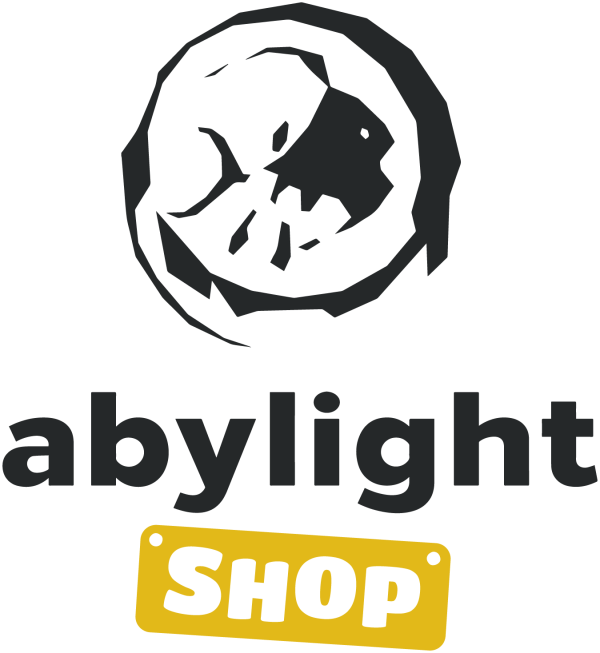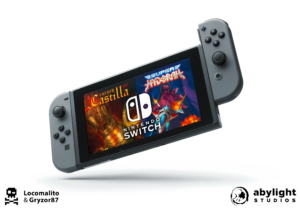More than 15 years of experience of making videogames means there aren’t many things the Abylight team and our CEO Eva Gaspar haven’t done or tried yet. From 8-bit consoles and traditional publishing, to the rise of digital distribution and smartphones, and all those awkward phases in between (remember when every mobile phone was completely different?). Now that we are living in the era of streaming, Abylight opens a Twitch channel to share our wisdom with the players and offer them a sneak peek into the development of new titles brewing in the studio.
In this first session, Eva introduces us to the challenges and peculiarities to face if we want to publish a videogame, addressing topics like intellectual property, digital distribution and the boom of the indie movement.
A brand new art
Videogames are still very new and young as a creative discipline. Don’t forget that Alberto Gonzalez and Ricardo Fernández, Abylight’s veteran founders, were already creating videogames at a time when technology only allowed a few colors on a screen and it was up to the player’s imagination to fill the blanks between the cover art and the rudimentary pixels on their TV.
For all those creators wondering how to protect their IP rights, Eva points out that because videogames are so new, and also heavily based on technology, there isn’t a harmonized international regulation, unlike what happens with other media like music or cinema.
“When we create videogames, we are creating an IP, because videogames are not something tangible, especially now with digital distribution.”
Eva Gaspar, Abylight CEO
It’s also important to know that there are two different views on how IP rights work: in Europe, you become the author just by creating something and you don’t have to register the rights. In USA, IP is protected by copyright and is much more commercialized.
Connecting with the market
Like in any other industry, there’s a chain to deliver videogames to the market: from the time the game is developed, until the moment when it reaches the player’s hands.
Before digital distribution, the games went from the developer to the producer, then to the publisher (who paid for the development), the platform owner (who made the copies) and then the distributor, who would send the games to retailers.
This meant that the player was very far removed from the entire process and very few people and companies were able to reach the stores. In the 80s and 90s, platform owners wouldn’t work with anybody. Becoming a publisher was very difficult and they were the only ones with access to the market.
This market, on the other hand, was heavily dominated by the USA and Japan. Europe never had its own platform and though in countries like France, Germany or UK there was a rising industry with important companies like Infogrames, in other places, like Spain, creators lived their alleged “golden era” confined to platforms without a truly international projection, like the ZX Spectrum.
“Now we are seeing a lot more shooting stars in the development scene of Spain”
Eva Gaspar, Abylight CEO
2000s: Before and after
A creator with the crazy idea of making a videogame before the 2000s and the arrival of digital distribution, had basically two paths to bringing it to reality (and one of them was actually really rare).
The first path, and the most common one, was to be approached by a publisher or producer directly, to develop a game for whatever they wanted, as work for hire. This way, the publisher had a great say in the final product and on what the developer actually did, because they were the ones in touch with the market and paying the whole game.
The second option was to have your own IP and pitch it to a publisher. This was an option for very few developers, because it was very difficult for a pitch to be picked up unless you were already a big name.
Everything shifted in the 2000s with digital distribution. Faster internet, online stores and new mobile phones able to run more sophisticated games, gave the impression to developers that they could jump ahead and bring their games directly to market, without so many people involved in the process.
Better middleware tools, easier platforms… Suddenly, publishing a videogame wasn’t so complicated anymore. However, the new struggle would be to make it known in an endless sea of new titles.
Creating and selling – two different skills
The idea that devs can go directly to the market, even if it’s true, is not always the best course of action. Selling is a craft of its own.
Publishers have deep knowledge of the market which can be invaluable for a developer in a landscape that grows more competitive each day. “At Abylight we’ve always thought publishers were important. We’ve worked with a lot of them and we are currently working with Ziggurat Interactive, developing Prison Tycoon: Under New Management” explains Eva. Even though this partnership follows a traditional (pre-2000s) model, Ziggurat doesn’t limit Abylight’s creative vision and there’s still a lot of space for us to create and bring our own personality and ideas into the game.
This way of doing things probably wouldn’t be possible without the new channels of distribution and the explosion of the indie phenomenon.
“At Abylight we are very mindful of the development side and the developer point of view. We are very invested as developers in giving a lot of attention to it. We are not a publisher in volume, we care about quality.”
Eva Gaspar, Abylight CEO
Indies changed everything
The new paradigm of digital distribution changed the field for developers, but also for publishers, which seemed to disappear (except for the really big ones) in the last 5 or 10 years.
Within the developers scene, a new archetype appeared: the videogame “Van Gogh”, a professional with a very small budget, but with a great and original artistic vision. In this new post-2000s world, what matters are the ideas, what you can do and what you have to say as a creator.
Before the rise of the indie movement, the industry was mainly catering to the biggest piece of the audience cake, which usually was a young male, between 15 and 35. Now we can say there is a game for everyone and enjoy a never before seen variety of genres and ways to play.
“It took us a while to catch on, but we did,because surviving is in our DNA.”
– Eva Gaspar, Abylight CEO
Because videogames are still a new industry that evolves at a dizzying pace, there’s always an exception for every rule. No one can say for sure what will happen in the future, but one can learn a lot from experience, and Abylight isn’t lacking in that department. Whether you are a videogame creator or just a gaming enthusiast, check out our Twitch channel every week to learn new secrets, tips and tricks about the industry. You can also continue the conversation in our official Discord. We hope to see you there!
“Publishers are back.”
– Eva Gaspar, Abylight CEO














